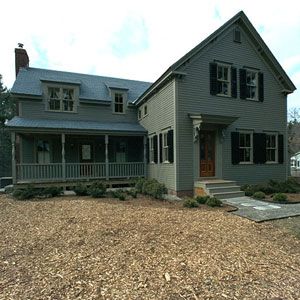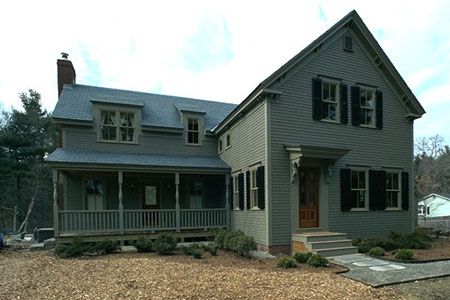
Window technology would seem to have come a long way since our ancestors were placing oiled (and therefore translucent) cloth across framed holes in the sides of their dwellings. Affordable glass advanced the cause, certainly, as did a sash that opened and closed. Eventually, double-pane insulating glass came along to reduce heat loss and keep houses cooler in the summer.
But, in the big picture, innovations have been few over the centuries. Especially challenged has been the area of frame technology. Metal, vinyl, and even fiberglass have given wood something of a run for its money, but each has its significant drawbacks. And wood itself rots.
So it was with some excitement that, during the Watertown project, we tried out a window using a new frame technology. Made from a composite of wood fiber and a thermoplastic polymer, these frames claimed to combine the best of both
worlds: the dimensional stability and insulating properties of wood and the rot imperviousness of vinyl. And because the material was extruded in a continuous stream, these windows could be quickly and easily made in any size by cutting and welding together the frame components; the company didn’t need to pick from a pile of standard-sized parts. This feature made the windows ideal for replacement use on Christian and Sue’s old Victorian.
With high-performance insulating glass, paintable vinyl exterior cladding in a choice of three stock colors, and stainable wood-veneer interior surfaces in maple, oak or pine, these units seemed to have a lot going for them. The stiffness of the composite let the frame remain thin, like wood, allowing more glass area than some other replacement
windows. And there was a recycling story: the composite got its wood fiber from the waste stream of the company’s standard wood window operation.
It had taken the window company seven years to perfect the composite technology, and in 1998 the product was just barely on the market. In the ensuing year, production and availability have expanded. Significantly, the company has decided to offer the windows solely through dealerships that provide a soup-to-nuts replacement service.
Nonetheless, we had liked what we’d seen in Watertown, and with the company’s cooperation we decided to try them throughout the Silvas’ new house.
They join a lineup of synthetic man-made materials on the house (the rubber roof “slates,” the fiber-cement siding and trim, and the expanded-urethane millwork), and yet look, like those other materials, as if they were vintage Victorian.
General contractor Tom Silva likes the way they install. “Like any good window, they have to be put in carefully and correctly,” he says. “But I like that they come with plastic shims that won’t expand and contract the way wood ones do. I also like the way the extension jambs work: they just roll and snap into the grooves provided on the frame. Outside, I can trim them any way I want. The sill, which also snaps on, can be cut at any length, so I get the flexibility of making them up with the traditional long ‘horns’ we like around here.”
They are not inexpensive. Figure on about $500 per opening, uninstalled. And, at least for the time being, they
are only available in certain parts of the country, and only as replacement service. But as an advance of window technology, they are significant. In fact, the company is considering applying the composite technology to siding and decking material.

